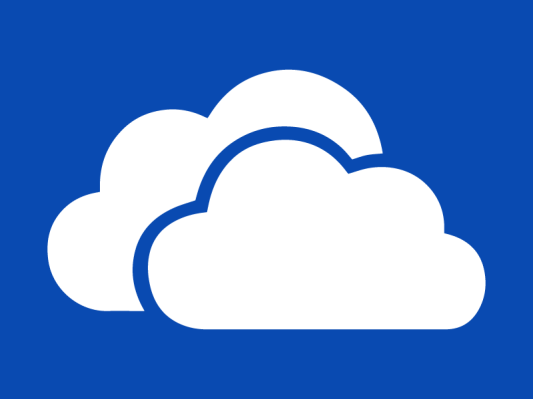Microsoft announced today that the business end of OneDrive, its cloud storage offering, would be unshackled from its other services, and sold as a standalone cloud storage solution for corporate customers. Cue a surprised gasp from the audience.
Microsoft has been working towards this result for some time. After building SkyDrive up from Windows Live Folders, the company released SkyDrive Pro before the recent rebrand, but that product was lost in the greater sea of other Microsoft productivity offerings. It was an also-ran.
Now, with OneDrive for Business — the new SkyDrive Pro — Microsoft is selling cloud storage directly to businesses, no other strings attached. If you don’t want to buy into an Office-as-a-service contract, you can still buy cloud storage from Microsoft.
This comes as part of Microsoft’s recent move to boost usage of its cloud storage platform, from both consumers and now businesses alike. OneDrive has a huge user base with north of 250 million accounts, but recent conversations with the company have intimated that engagement — usage, really — among those gobs of humans is low, or at least lower than they want.
Putting aside consumers, we have two questions: How does Microsoft’s business offering stack up to the competition, and, of course, why does cloud storage matter to begin with? Why is Microsoft picking this fight? Good questions. Let’s answer them.
OneDrive vs. Box vs. Dropbox
Cloud file storage may be the best funded niche in technology ever. Dropbox has raised $607 million. Box has raised $414 million. That’s more than a billion for just two players in the market. So, Microsoft is coming into this behind. I say that under the presumption that SkyDrive Pro, being all but invisible, didn’t accrete much market or dollar share in its short life.
To compensate for its deficit, Microsoft is offering a deep discount — 50 percent — for a few months. Here are the comparable tiers at the three companies:
- Microsoft: $5 per user per month: 25GB per user. (Promotional pricing April through September: $2.50 per user per month for 25GB per user. For certain enterprise customers: $1.50 per user per month.)
- Box: $5 per user per month: 100GB per user.
- Dropbox: $9.99 per user per month: 100GB per user.
So during its promotional period, Microsoft is offering a service with a commensurate per-gigabyte cost to Dropbox. Microsoft states that companies can buy more storage as they need.
Box and Dropbox both offer plans with unlimited storage. I think that implies where the fee per gigabyte is going for paid cloud storage products: zero. But we’re a ways from that now. Moore and his little law will push that curve for us.
Why would you use OneDrive for Business over Dropbox or Box, two companies that have seen quick revenue growth, implying that their product-market fit is strong? Well, Microsoft doesn’t appear to be playing that game, yet at least. According to TechCrunch’s Frederic Lardinois, Microsoft is positioning OneDrive for business as an early step towards cloud for companies: “[OneDrive] is meant for companies that want to keep their on-premise infrastructure intact, but still want to start moving to the cloud for file storage and sharing.”
This makes some sense: Microsoft’s OneDrive is still in the process of a rebrand, and the company’s online version of Office was — finally — rebranded Office Online and moved to Office.com recently. Microsoft is moving in the right direction here, but at a paced speed.
So among potential clients looking for an aggressive bent towards the cloud, Box and Dropbox will retain their current market advantage. But what Microsoft is building is interesting, as it is taking the direct opposite approach of Box: Box built cloud storage and now wants to build editing tools on top; Microsoft built Office, and now wants to place cloud storage up underneath it.
I’ve written that Box represents a threat to Office, given that people like editing tools near where their files live. So as Box picked up corporate clients’ files, it was building an opportunity to create editing tools that it could charge from, stealing oxygen from Microsoft’s Office empire. The hiring of former Office man Steven Sinofsky, and the release of Box Notes carried the theme.
Box has done an excellent job growing. Its burn rate aside, Box is heading public, a testament to its rapid top-line expansion. Dropbox can’t be too far behind. But even though those firms are performing well, the picture that Microsoft is drawing could loom in their future.
Most companies use Windows and Office. A slowly falling percentage, yes, but it’s still mostly the case for companies of scale. OneDrive for Business opens a pathway for Microsoft to come in and offer change, but also stability. You want that cloud thing? Well, how about some Office Cloud that plugs into Windows. Once Microsoft fully matures Office Online, and creates perfect real-time collaboration between Office desktop and web apps, the SkyDrive storage solution will be attractive. The Office tie-in is the best thing Microsoft can offer as a competitive advantage.
But that is still a ways off. Today is a single step in that direction. A big enough movement to slow Dropbox or Box? Not in the short term, I’d say. But both those companies now have to think of another player in the space they have all but created.
Viva la platform wars.
